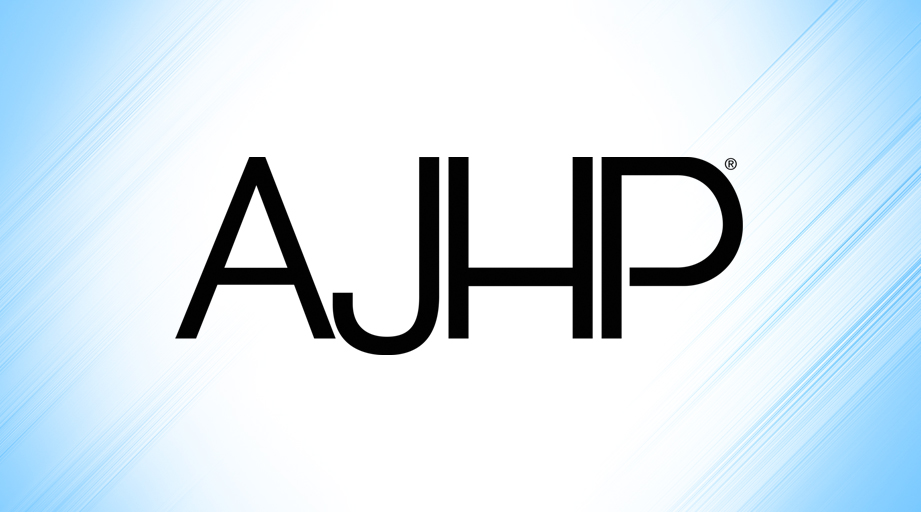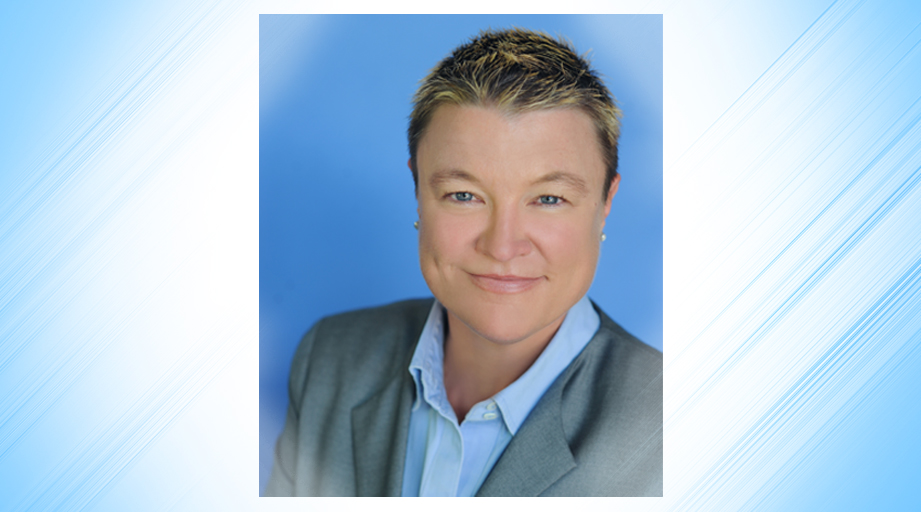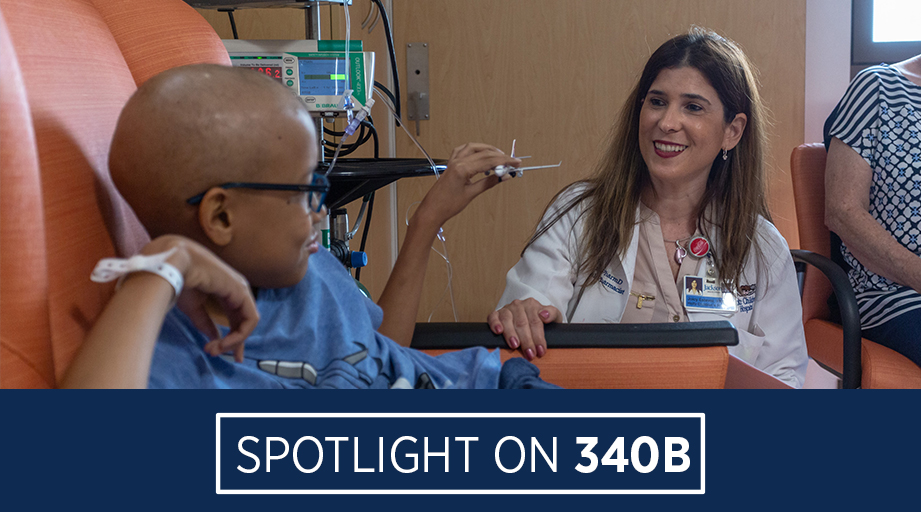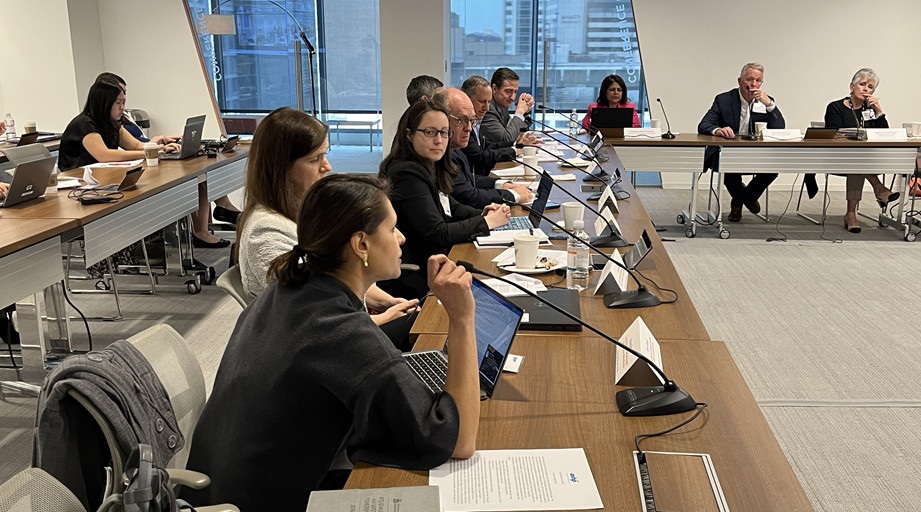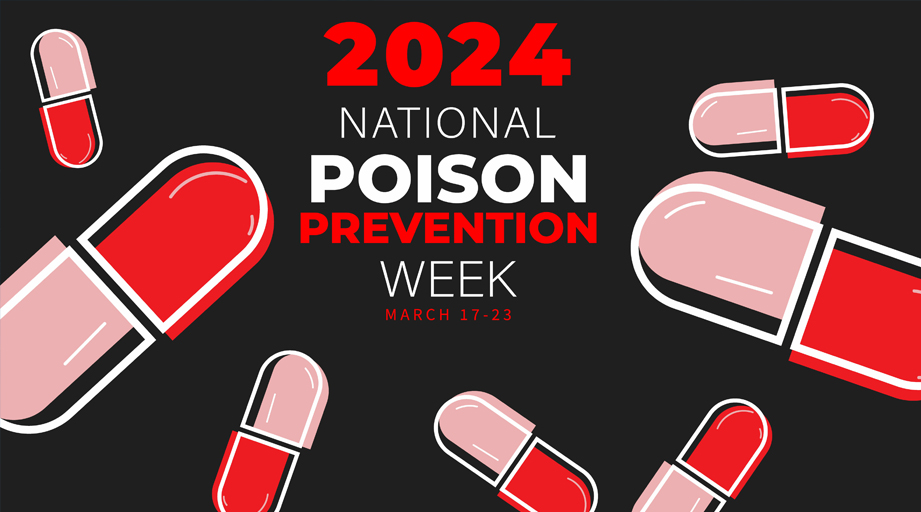
Kofi Andoh, a rising third-year student at Notre Dame of Maryland University School of Pharmacy in Baltimore, has observed the rewards of clinical work as well as its darker side — the daily stress and struggles clinicians face and the potential consequences to their well-being.
Andoh was invited to Accreditation Council for Graduate Medical Education (ACGME) headquarters in Chicago for a May 28 storytelling forum sponsored by the National Academy of Medicine (NAM). He was one of five selected participants who shared their personal experiences with the clinical learning environment and how it affects well-being.
“I told my story about how I got involved in pharmacy and how I started to realize that there was a problem in healthcare as far as clinician burnout,” he said after the event.
The forum was followed by a May 29 public meeting about redesigning the clinical learning environment, an activity of NAM’s Action Collaborative on Clinician Well-Being and Resilience. ASHP is an original sponsor of the collaborative, which was launched in 2017.
“In order to perform at your optimal or highest game, you have to be in tune with yourself. You have to be healthy yourself in order to care for others,” Andoh said. “That’s what the meeting was about.”
Andoh attended Howard University as an undergraduate on a full athletic scholarship while majoring in chemistry, and he initially aspired to a professional basketball career.
During his freshman year, Andoh’s mother was diagnosed with cancer, and she passed away before her son graduated. Until his mother’s illness, Andoh said, he’d never really been exposed to the healthcare system and how clinicians work together to help their patients.
“That’s what got me into pharmacy,” he said. “I felt I could make a difference in healthcare.”
Andoh said he’s come to appreciate the complexities of patient care and the demands placed on clinicians. He said students also feel demands and pressures but may be reluctant to acknowledge them to others.
“I think sometimes by expressing your stress, you’re expressing vulnerabilities that are misconstrued as weakness,” he said. “And I think this culture is not conducive to an optimal learning environment.”
He said it would be helpful to create “checkpoints” in the learning environment “where students are able to express our feelings and not be judged.”
“The problems we have as students carry over to the problems we have in the workplace. So let’s see if we can change the foundation of our learning program,” he said.
Participants in the May 29 public meeting said clinical learning environments that support practitioners’ health and welfare are needed for optimal patient care.
“The cultures in our learning environments are, in fact, very powerful,” said Holly Humphrey, President of the Josiah Macy Jr. Foundation, a nonprofit organization that supports the advancement of health professions education.
Humphrey told meeting attendees that annual survey responses submitted by her medical residents over 14 years consistently revealed fears about how they would emerge from training.
“They were afraid of hurting a patient — and they were afraid of losing themselves, losing their humanity, in the course of their residency education,” Humphrey said.
ACGME Chief Education and Organizational Development Officer Timothy Brigham said changing the clinical learning environment is difficult. He called the May NAM meeting “a bellwether” for driving that process.
He said the clinical learning environment is “where we turn people who want to be clinicians into clinicians” and where lifelong attitudes and behavior patterns are formed.
Brigham and other speakers said an ideal learning environment supports trainees and creates compassionate, empathetic clinicians who embrace their patients’ priorities while providing safe, optimal care.
“What we’ve done systematically in our clinical learning environment, in some ways, is taken time away from that,” Brigham said.
Brigham is cochair of ACGME’s Physician Well-Being Task Force, which is part of the accrediting organization’s overall effort to improve healthcare through advances in the training of medical residents.
He said ACGME launched the task force, in part, in response to the suicide of a young physician who came to Chicago for an advanced residency program and took his life four months later.
According to NAM, an estimated 400 physicians commit suicide each year, more than double the national average for the general population.
The action collaborative’s five working groups, over a four-year period, are tasked with identifying evidence-based strategies to improve clinician well-being and to develop resources that further that aim.
Christina Martin, ASHP’s Director of Membership Forums, and Anna Legreid Dopp, Director of Clinical Guidelines and Quality Improvement, participated in the May public meeting and are representing ASHP on the action collaborative’s Leadership Engagement and Organizational Best Practices and Metrics working groups.
Legreid Dopp said she believes the working groups’ efforts “will mutually benefit ASHP’s members and advance the work of the action collaborative.”
She noted that ASHP previously contributed to the NAM working group that developed a conceptual model depicting external and individual factors that affect well-being and resilience.
Martin said ASHP is committed to continuing its work with NAM to understand clinician stress, burnout, and suicide and to develop evidence-based solutions and resources to combat the problem.
“Many of these resources may directly support the needs of our pharmacist, student pharmacist, and pharmacy technician members,” she said.
Both pharmacists encouraged ASHP members to join NAM’s action collaborative listserv and to ask their leadership to join the nearly 200 organizations that have submitted formal commitment statements to show how they are enhancing clinician well-being.
ASHP, through its Well-Being & You resource, encourages members to share their experiences with burnout and take a pledge to show their commitment to strengthening resilience.
[This news story appears in the September 15, 2019, issue of AJHP.]


